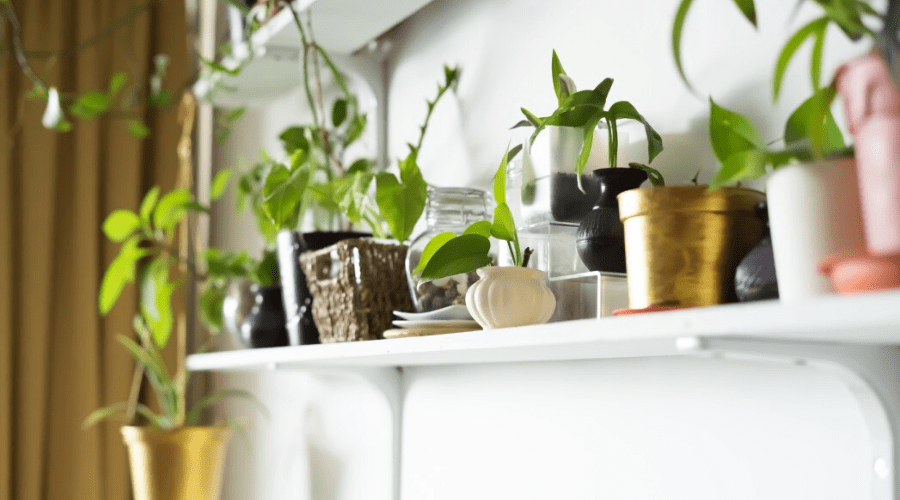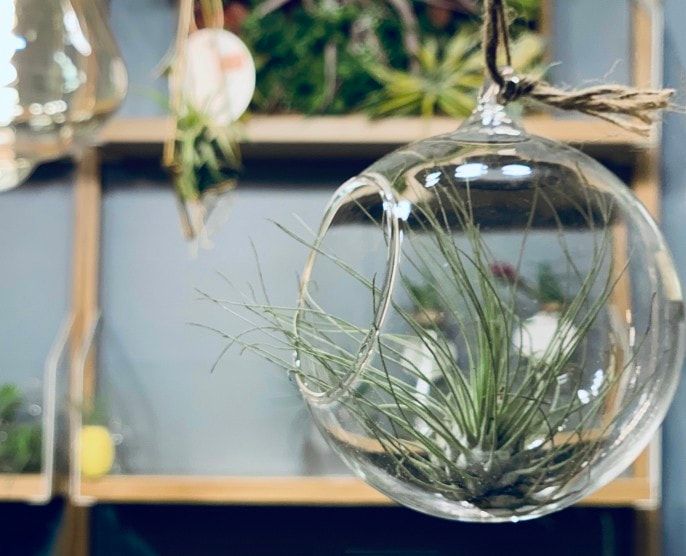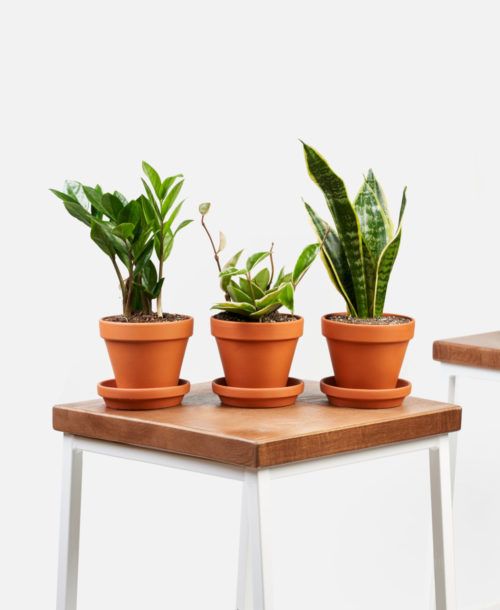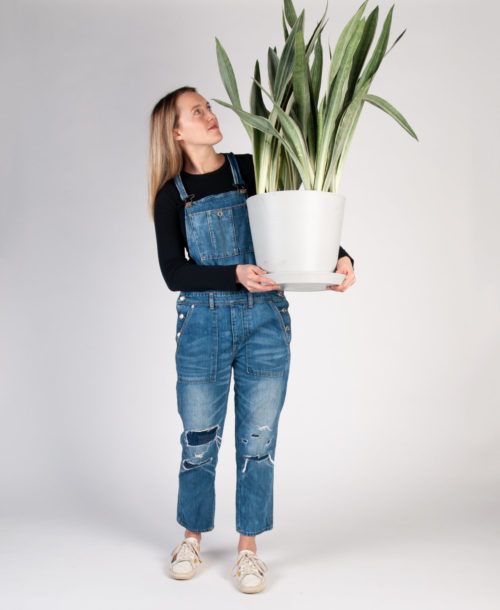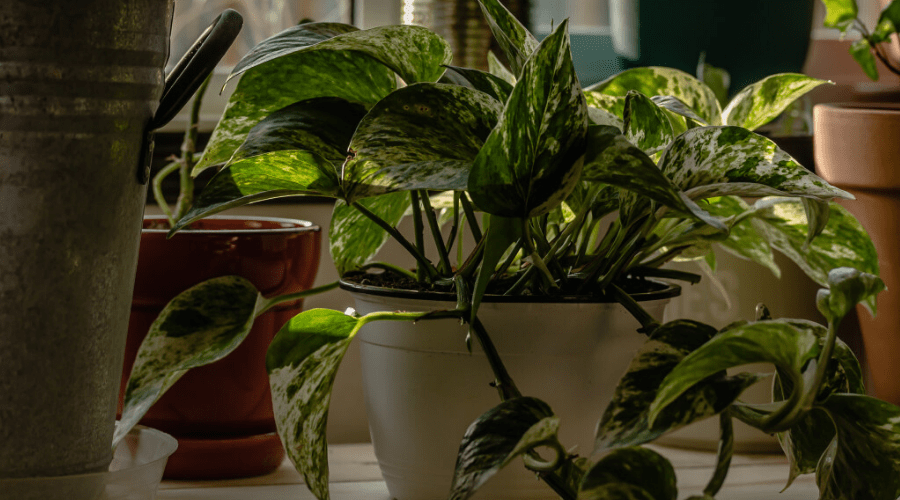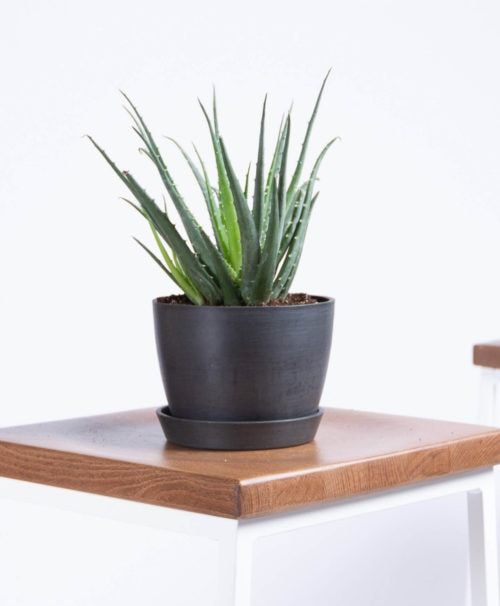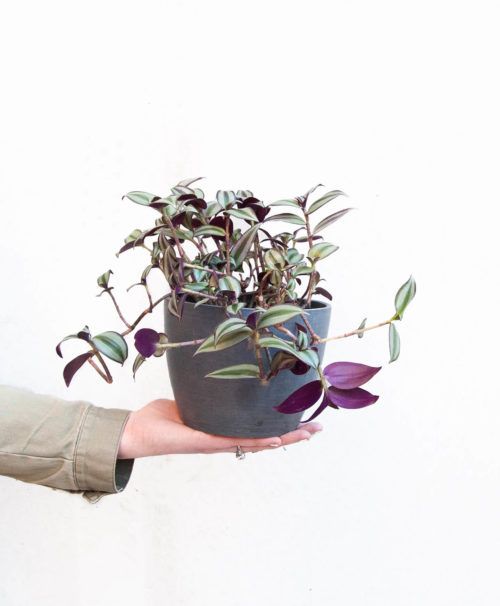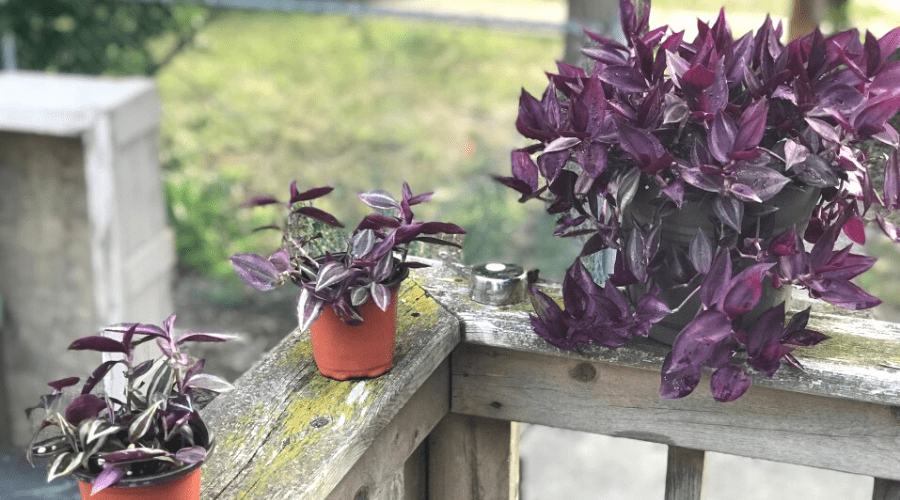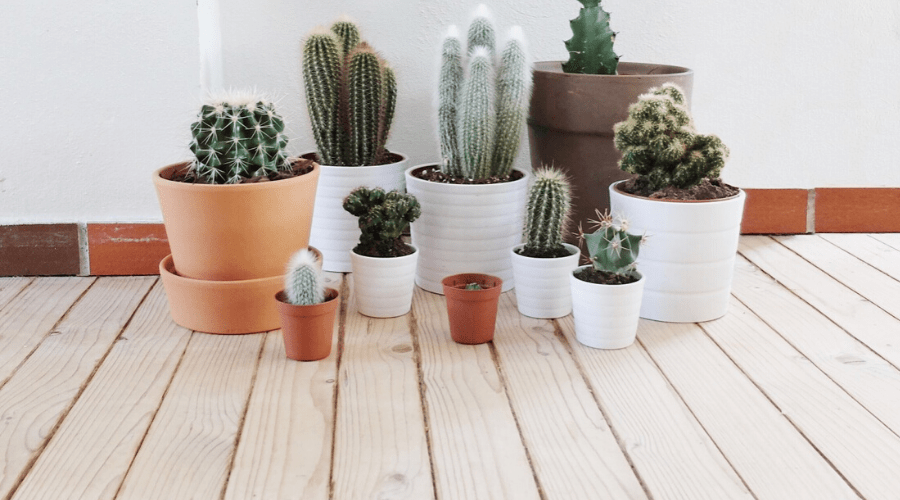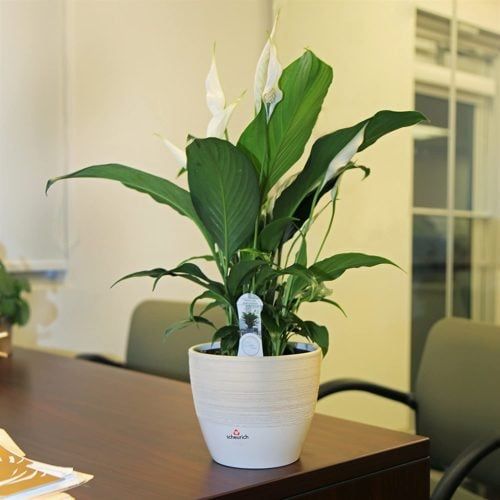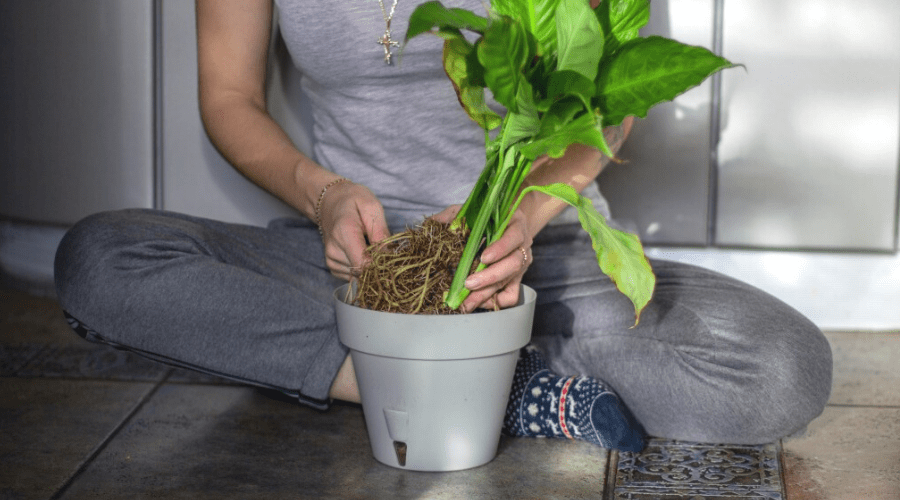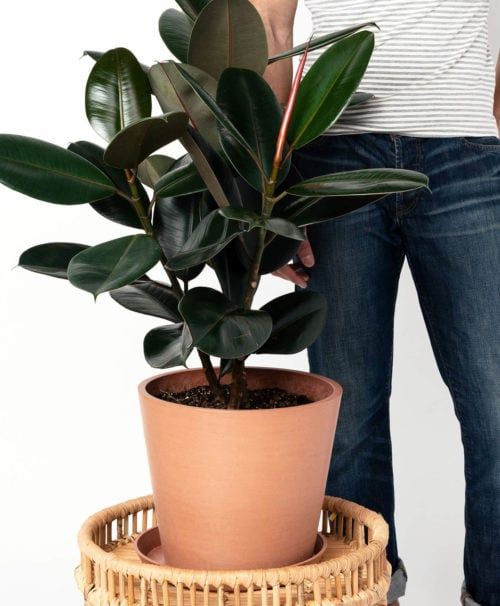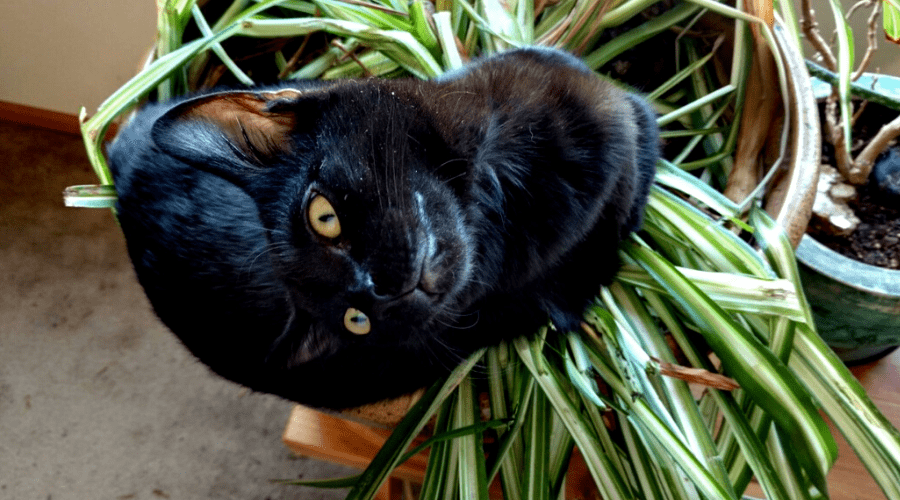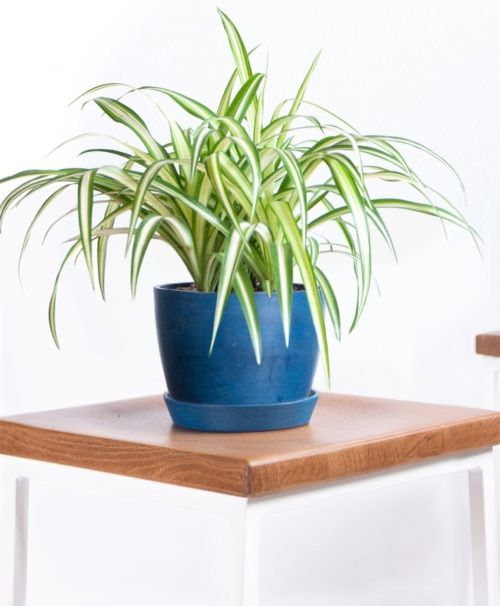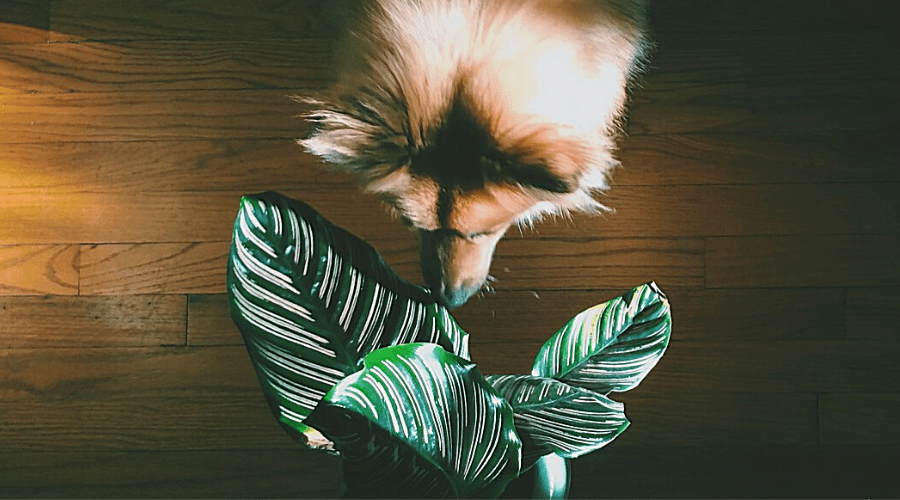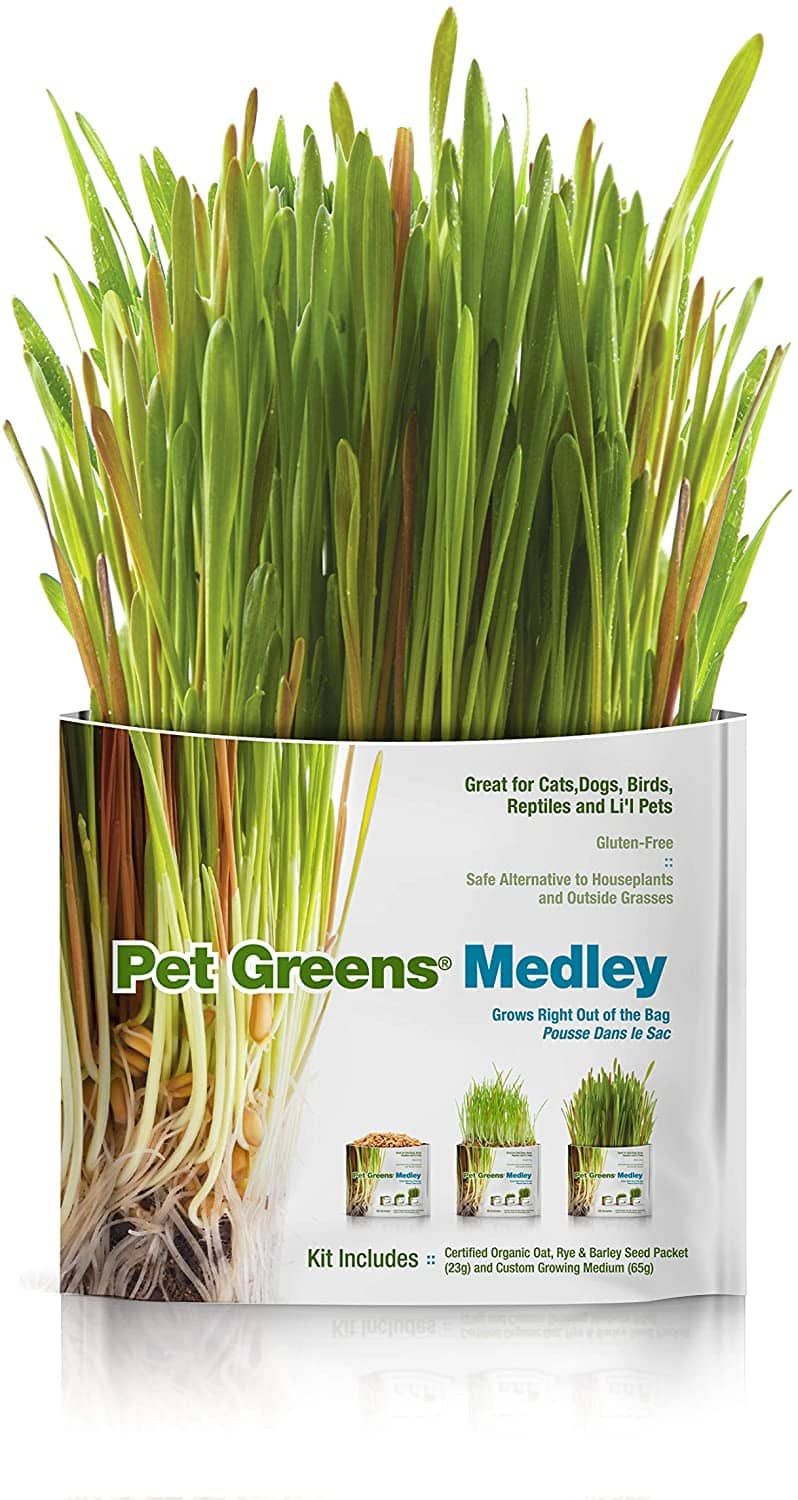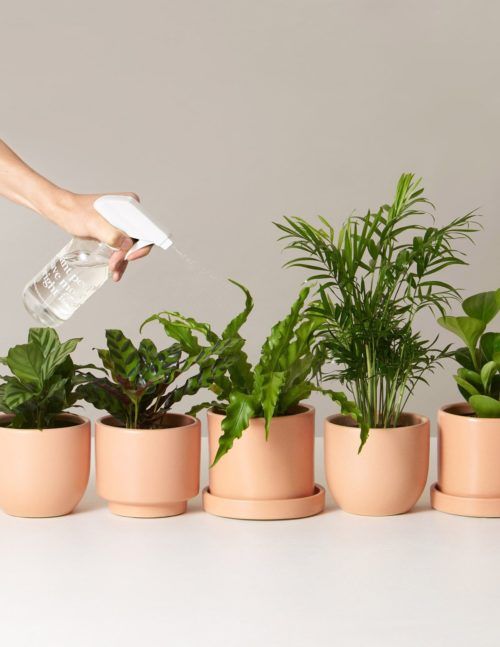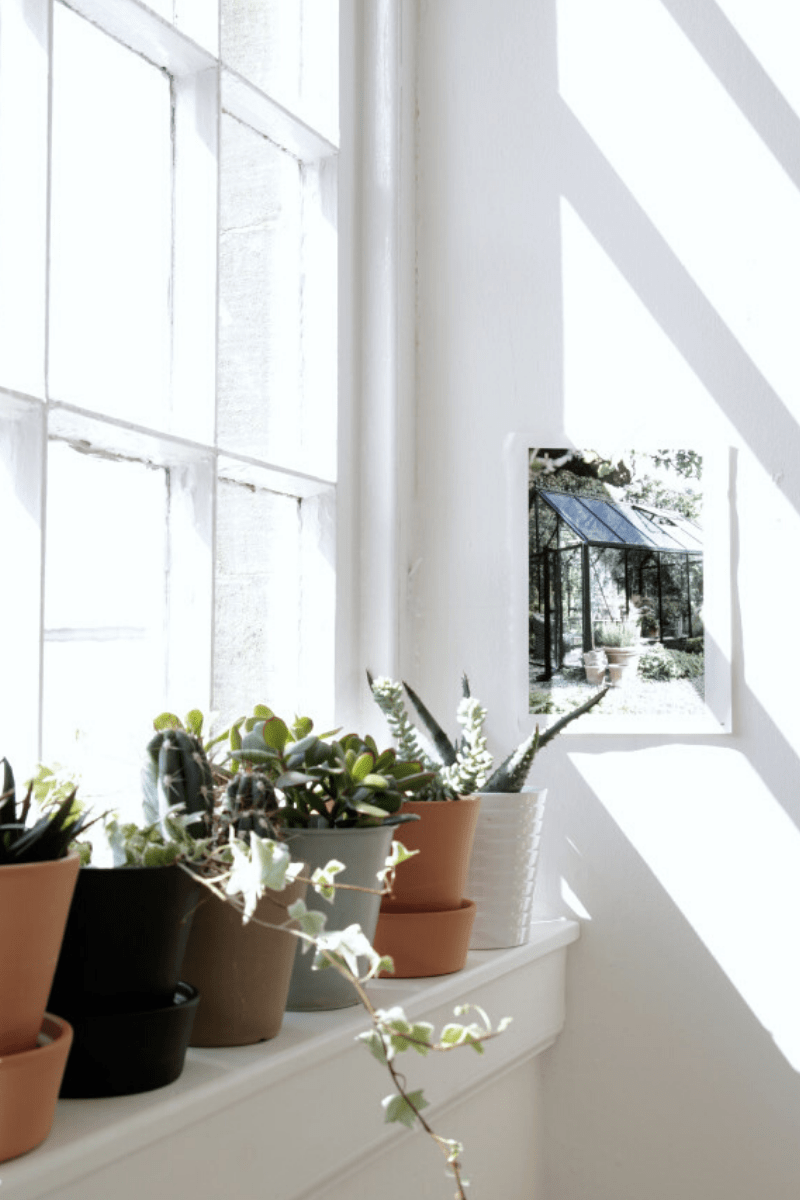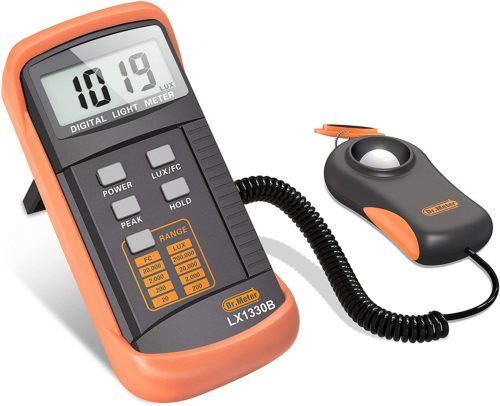From Instagram to Pinterest to YouTube, it seems everywhere you look a beautiful indoor garden is thriving in someone else’s home. If you’re ready to join the fray but worry you’ll be a bad plant parent, then you’ve come to the right place. You don’t need to be a green thumb—or even enjoy the color green—to find a plant that will be happy in your home.
This ultimate guide to indoor plants will help you find the right variety for your climate, lighting conditions, humidity, time, and level of commitment. Whether you’re willing to coax a fussy tropical into bloom or you’re more of a “set it and forget it” type, you’ll find something here to suit your needs.
The Benefits of Indoor Plants
Indoor plants are stylish, but they’re also good for us. Just having indoor plants around can improve your mood, and actively looking at and taking care of a plant for just three minutes per day can reduce stress. Large plants with specific needs, such as monstera and fiddle leaf fig tree, are great for the person who loves to have a long-term project. Some plants are especially good at purifying indoor air, and others are pet-friendly and provide productivity-energizing greenery that is safe for cats and dogs with curious mouths. Whatever your needs, there is a houseplant that is ideal for you. Here are my favorites for a wide range of indoor growing conditions.
Best Indoor Plants for Low Light
If your indoor space measures less than 1000 lux, you’ll need to choose plants that grow well in low light. There are plenty of options; some succulents do reasonably well in low light, but also many tropical plants—evolved to thrive under the indirect light filtered through the canopy—can find happy homes in dim rooms. Here are a couple of great choices for indoor spaces with low light.
ZZ Plant
Zamioculcas zamiifolia
AKA: Zu Zu plant, Zanzibar Gem
Lux: 250+
Light: Indirect, low to bright light
Water: Infrequently, only when soil is dry 1.5 to 2 inches below the surface
Temperature range: 60-72° F
Height: 6-18 inches
Fertilizer: Weak, infrequent.
Special care: Leaves should be wiped clean or dusted as needed.
Tough Stuff Collection
A collection of three low-light-hardy plants, including a ZZ plant, a sansevieria variety and hoya variety, in coordinating Ecopots moulded from recycled plastic. Perfect for the beginner or for any room with limited daily natural light.
The ZZ Plant, or Zamioculcas zamiifolia, is a nigh-indestructible succulent with an interesting shape. Some varieties have leaves that mature into dark black shades or variegated lime-and-emerald patterns. My favorite (and the longest-lived indoor plant in my home) is the standard glossy green ZZ.
It thrives even in low, indirect light, dislikes frequent watering, and does very well with almost no attention. In fact, what ZZ plants hate more than anything is direct sun, and what ZZ plants hate more than almost anything is too much water. Get a cool container, plant your ZZ with a standard potting soil mix, trim droopy stems as your plant matures, wipe the dust away every now and then, and enjoy your thriving Zanzibar gem for as long as you both shall live.
Snake Plant
Sansevieria
AKA: Mother-in-law’s tongue
Lux: 250+
Light: Indirect, low to bright light
Water: Infrequently, only when soil is dry 1.5 to 2 inches below the surface
Temperature range: 40-85° F
Height: 2-40 inches
Fertilizer: Weak, infrequent.
Special care: Leaves should be wiped clean or dusted as needed.
Sansevieria Sayuri
Sansevieria Sayuri is a large, pale-patterned variety with rigid leaves and an upright growth habit. This one comes in a large pot suitable for placement on floors or low furniture, and its tall height (26-38 inches including the recycled plastic Ecopot) means it'll make a statement no matter where you display it. Low-light, drought hardy sansevieria can live ten years or longer indoors.
Snake plants are great in almost any indoor environment, but they do especially well in areas where other plants might wither. With their low water requirements, wide temperature tolerance, and unfussy care, these succulents are ideal for the inexperienced indoor plant keeper or frequent traveler. There are hundreds of varieties of snake plants, all with rigid green leaves in various patterns and shapes. Universally, care requirements are low: avoid overwatering, wipe the dust from the leaves on occasion, and turn the pot every couple of weeks to encourage even growth.
Low-Light Runners Up
Dracaena varieties, English ivy, and all forms of pothos are easily grown in low light, as well. Jade plants, another type of succulent, can withstand several hours a day of low, indirect light, but should be given at least one hour of bright or full sun.
Best Low Maintenance Indoor Plants
Every plant has different needs, but some indoor plants are happier than others to be left to their own devices. These are the easy-care heroes of the indoor garden, and as far as I am concerned, the more of these the merrier. Set a calendar reminder to water and fertilize these beauties as needed, then sit back and enjoy the clean air and inviting ambiance of your new indoor Eden.
Aloe
Aloe vera, A. barbadensis Mill., Aloe indica Royle, Aloe perfoliata L. var. vera and A. vulgaris
Lux: 10000+
Light: Medium to bright light, indirect or direct
Water: Infrequently, when soil is completely dry
Temperature range: 55-85° F
Height: 6-30 inches indoors
Fertilizer: Weak, sparingly, no more often than once per month
Special care: Aloe is susceptible to root rot from overwatering, and to mealybugs. Wipe leaves clean at watering and be sure to provide plenty of drainage.
Hedgehog Aloe
For the plant-owner with plenty of light but little time or patience for high-maintenance greenery, this sturdy Hedgehog Aloe provides the perfect balance of ease and beauty. Keep one in the kitchen for minor burns and another in the office for decor.
Aloe is one of the easiest plants to keep alive and thriving because unlike most indoor plants, it kind of hates being watered, loves direct sunlight, and needs very little (if any!) fertilizer. Get yourself an aloe and a sunny window, a pretty planter, and... then do nothing. Enjoy the fruits of your minimal labor. Aloe can be used to treat minor burns and cuts, soothe dry and itchy skin, or as a skin-calming addition to a nice warm bath. It's also just nice to look at, so put it in a prominent place and admire it for many years to come.
Tradescantia
Tradescantia zebrina
AKA: Wandering jew, inchplant, spiderwort, purple queen
Lux: 10000+
Light: Indirect, medium light
Water: Regular watering, when soil is dry .5 to 1 inch below the surface.
Temperature range: 55-75° F
Height: 4-72+ inches
Fertilizer: Every two weeks in spring and summer.
Special care: Aphids can be a problematic pest. Remove infected stems and spray the rest of the plant with water.
Tradescantia Zebrina
For the new plant-owner or the experienced gardener, tradescantia is a joy to keep. Not only are its deep purple leaves iridescent and relatively pest-resistant, but it also grows readily in nearly any room with a window or grow lamp. It's easily propagated, too, which means in no time you'll have two plants! And then three, and then four...
If your indoor space has good lighting, and you like purple, pink, silver and every shade of green, then tradescantia has a variety for you. Best of all, this is one of the easiest to grow of all indoor plants, and it propagates so quickly that you can start an entire indoor oasis with just one small potted plant. When stems reach a few inches or more past the edge of the pot, simply snap them off and pop them back into the soil to encourage bushier growth. Or you can grow an entirely new plant by standing broken stems in clean water until roots appear (5-7 days), and then plant in new pots.
Tradescantia varieties are too varied to cover here—the genus has as many as 75 unique species—but generally, all require at least a few hours of medium to bright lighting per day, frequent watering, and a little fertilizer in the warmer months.
Be careful to keep your tradescantia indoors unless you are certain it is not invasive in your region. I have many tradescantia zebrina varieties, but avoid tradescantia flumiensis because it is a recognized invasive species in my state. Unleashing invasives in local environments is a quick and easy way to upset the ecological balance that keeps your land grand (and the officials tasked with keeping invasives from overwhelming native species).
Low Maintenance Indoor Plant Runners Up
Most succulents including aloe vera are easy to care for, as are almost all cacti. Similarly, philodendrons are lovely, classic houseplants that are simple to keep healthy and happy. For interesting foliage, a Chinese money plant (pilea peperomioides) provides a cool, easy to propagate shape to a home office or kitchen. For the truly helpless indoor gardener, air plants can be a joy to maintain and liven up any interior.
Best Indoor Plants for Cleaner Air
Houseplants make us feel better, both psychologically and physically. In 1989, NASA conducted a study to learn which plants would help recycle and purify the air in long-term crewed space missions. These are the most effective plants from that list, which were best at removing benzene, trichlorethylene, formaldehyde, and ammonia. The result? Cleaner air in your house, cleaner air in your lungs, and happier people, pets, and plants all around.
Peace Lily
Spathiphyllum
AKA: Spath lily
Lux: 10,000+
Light: Indirect, medium to bright light
Water: Frequent, keeping soil moist even in winter.
Temperature range: 65-80° F
Height: Up to 48 inches indoors
Fertilizer: Weekly in spring and summer.
Special care: Toxic to children and pets.
Costa Farms Spathiphyllum Peace Lily Live Indoor Plant in Premium Scheurich Ceramic Planter, 15-Inch
A peace lily makes a beautiful addition to your indoor garden, and serves an important role in cleaning the air in your home, as well. This one is 15 inches tall including the decorative planter, which comes in multiple colors and shapes. Makes a great gift, as well.
Peace lilies are easy tropicals to maintain indoors, where they grow well in medium-to-bright filtered light and loose soil with plenty of fertilizer and daily misting for the high humidity they love. Most varieties reach two to three feet in height and bloom in spring. A range of foliage colors and shapes are available, and some smaller varieties are more suitable for small spaces.
The important thing to note about peace lilies is that they are excellent air-purifying plants, and there are very few pest concerns outside of the occasional mealybug problem (easily treated with a misting of diluted soapy water and a clean cloth).
If you have children, cats or dogs, be sure to keep peace lilies out of reach. Ingesting the leaves, stems or flowers can cause extreme discomfort, vomiting, and in extreme cases, renal failure. Reach out to your local poison control hotline, urgent care, or veterinarian if you believe your child or pet has eaten part of your peace lily.
Rubber Plant
Ficus elastica
AKA: Rubber tree
Lux: 12000+
Light: Bright, filtered sun.
Water: Frequent, even moisture.
Temperature range: 60-85° F
Height: 12-96 inches
Fertilizer: Monthly in spring and summer.
Special care: Trim when needed, do not overwater, dust leaves when necessary.
Burgundy Rubber Tree
Robust rubber plants with their dramatic, glossy leaves are the perfect indoor tree for any home or office. Maintenance is easy: water every couple of weeks and make sure it has some sunlight. Rubber trees can grow to ten feet or more indoors, so prune yours back when it reaches the best height for your home.
Few indoor trees are as low-maintenance as rubber plants, or as effective at filtering formaldehyde and other toxic elements from indoor air. Given proper light, enough (but not too much!) water, and a safe place in the home away from chewing pets (and kids) and climbing kids (and pets), a rubber tree can live 15 years or more indoors. They often reach six to ten feet tall indoors, but can be clipped back if they become too tall for your home.
Air-purifying runners up
Snake plants, pothos, spider plants, chrysanthemums, and ficus are all great air purifying plants, as is the Boston fern.
Best Pet-Friendly Indoor Plants
Pets are notorious chewers, especially when they’re young. It can be hard to keep toxic plants away from cats in particular because they’re able to teleport to the tops of even the tallest furniture and appliances. If you have a bitey dog or cat around, play it safe and keep only indoor plants that are safe for the occasional midnight snack (or afternoon nap).
Spider Plant
Chlorophytum
Lux: 2000+
Light: Bright, filtered or full sun.
Water: Infrequent, even moisture. Easily overwatered.
Temperature range: 60-80° F
Height: 10-30 inches
Fertilizer: Once or twice per year.
Special care: Use distilled water only.
Spider Plant
The fun and whimsical spider plant with its long, curved leaves is a classic indoor plant for home or office. The upkeep is simple: give it lots of light and only a little water. Best of all, your pets and kids are safe around a spider plant, even if they take a bite or two.
Spider plants are the indoor plant for several reasons: they don't mind getting a bit dry, don't need a ton of bright sun, prefer not to be touched or moved around, and they're safe for pets. So safe, in fact, that I found my dog enjoyed digging mine from the low shelf I used to keep it on, just as he enjoys digging holes on our walks. Now it’s in a hanging pot and we don’t have to worry about that anymore.
The primary issues indoor plant beginners have with the spider plant are using chlorinated tap water and overwatering. For the first concern, use only distilled water, or let your chlorinated tap water degas by sitting uncovered in a container for 24 hours or longer. For the second, I highly recommend placing a moisture meter in your hanging basket or plant stand. My spider plant is the only plant in my home that has a dedicated moisture meter; I’ve found it’s best to let the hygrometer tell me when it needs a drink because I often guess incorrectly and have had to let her rest in the shade to recuperate from near-drowning more than a few times, and rescuing a drowned spider plant is often more difficult than expected.
Grass
Why fight it? Sometimes the only solution to a pet that chews your plants is to give the pets their own plants to chew. Pet grass is a mix of cat, dog, bird, and reptile-friendly greens including barley, oats, and rye. You can get a ready-to-grow kit, leave it on a windowsill, and either clip the grass to add to your pet's food or let your animals graze as they please.
100% Certified Organic Oat, Rye & Barley Seed And Soil Mixture
- Grows right from the bag
- Organic, pet-safe, and nutritious
- Satisfies chewing and grass cravings
- Large pets will want more than this kit grows
|
|
Pet-friendly runners up
Prayer plants (calathea varieties), parlor palms, giant ferns, African violets, and all echeveria succulents are pet-friendly additions to your indoor garden. Some houseplant shops now offer pet-friendly subscriptions to ensure your burgeoning urban jungle is safe for your entire family.
Pet-Friendly Plants Monthly Subscription
Pet parents can be plant parents, too. If you don't know where to start or want to be sure you're buying only the safest potted plants for your home, The Sill's Pet-Friendly Plant Subscription Box is just the ticket. Each month you'll receive one healthy nontoxic house plant in an earthenware planter in the color of your choice. Having plants and pets has never been so simple.
Indoor Plant FAQ
How to Do I Know How Much Light I'm Getting?
It’s important when caring for indoor plants that you provide ample light for your houseplants’ needs. Indoor lighting conditions vary wildly based on your climate, number of windows, and even the layout of your home or the kind of landscaping you have in your yard. And, of course, as the sun travels through the sky, the time of day can change the available light inside your house.
Do I Need a Grow Lamp?
If your indoor space is truly lightless, grow lamps can help you expand your range of options. Our buyer’s guide to LED grow lights can help you get started if you want to bump up your indoor plant population, help a finicky flower bloom, propagate your houseplants more quickly, or support seedlings through the dark days of late winter before they go into their new permanent pots or outdoors.
Do I Need to Fertilize My House Plants?
Maybe! Some plants, particularly those with showy flowers, thrive with regular fertilizer through spring and summer. Others hardly need more than a mist of water now and again.
Do I Need a Special Tool to Measure Brightness?
Some things are obvious. If you have a large window or row of windows that get a great deal of unobstructed light throughout the day, you have a sunny living room with plenty of bright light. If your home office is windowless, you have low light conditions.
But sometimes it’s not so clear-cut. For these times—when a tree or trellis blocks midday light, or when your windows only receive good light in the mornings—you might need to get a bit more technical. This is when a lux meter is handy. There are multiple phone apps (from free to a few dollars) that can read your lux level, but they are hit or miss for accuracy. The best way to get a good light-level reading is to use a lux meter. I use this one because it is inexpensive, has a detector separate from the meter readout (for easy reading and measuring in weird corners), and is certainly more accurate than necessary for picking plants that will work in the light level of your interior spaces.
For home, school, and professional use
- Very accurate
- Lightweight
- Detector and meter are separate for easier measurements and reading
- Will not measure LED light output
|
|
Conclusion
Whether you're sheltering a single peperomia from the cruel, cruel world or live in an urban jungle beneath a canopy of rubber trees and banana palms, there is an indoor plant that meets your needs and enriches your home decor without breaking your bank or derailing your schedule. I hope this general guide to houseplants and plant care has been useful. If there are specific plants you'd like us to look at more closely, leave a comment and let us know. Happy indoor gardening!

